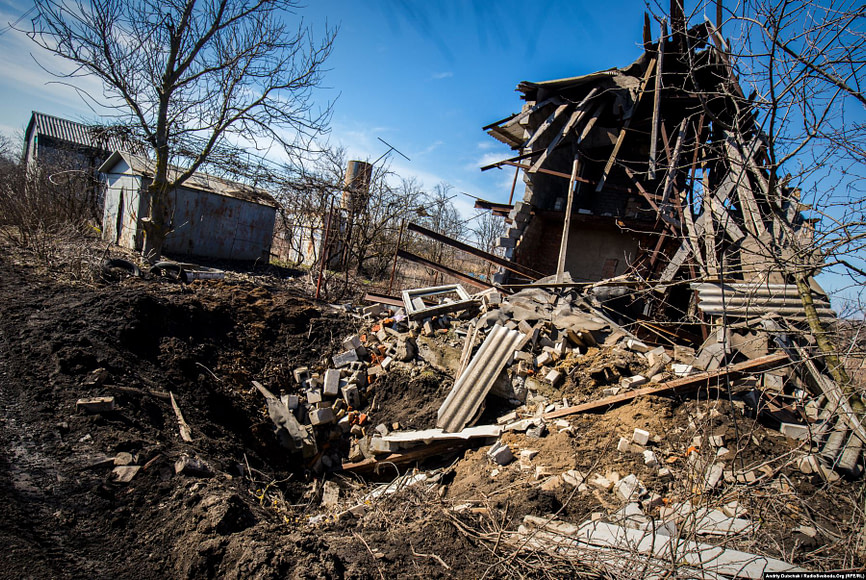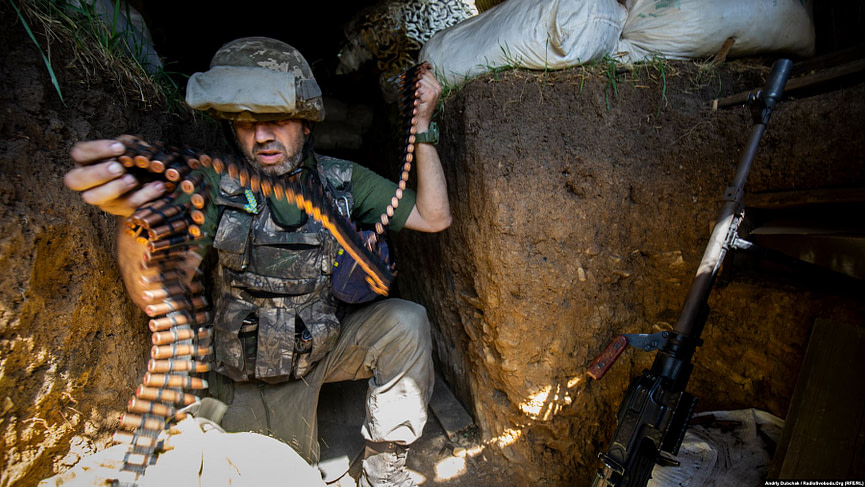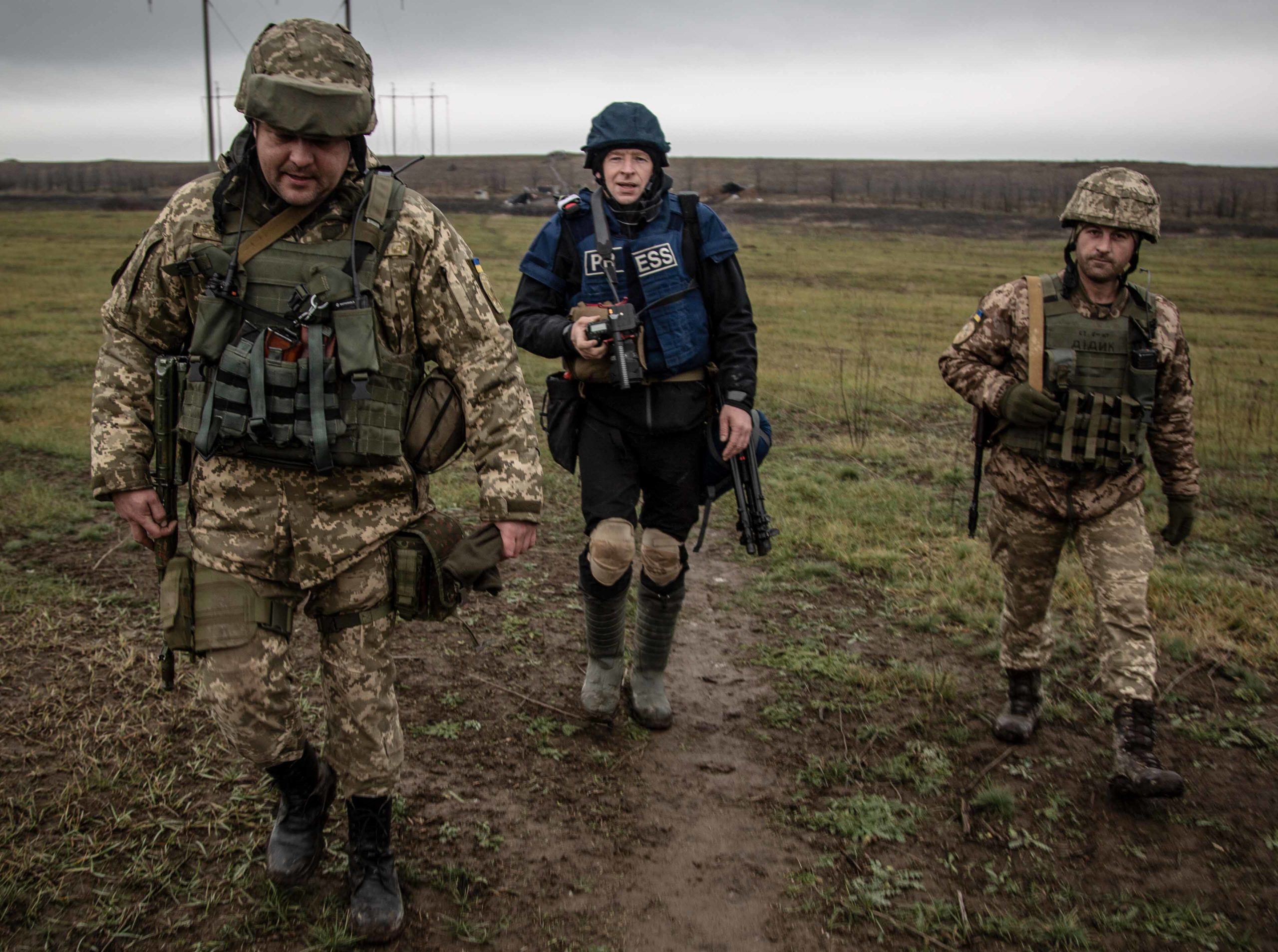Andriy Dubchak came to journalism from the world of IT. Being familiar with new technologies, he became the first streamer at the Euromaidan Revolution. He also held video streams from all the key events of the Revolution. Later, he covered Russia’s occupation of Crimea in 2014. Realizing the power of photography, Andriy started to pay more attention to it. Since 2016, he has been covering the Donbas war extensively and is known for his series of photo reports from there.
“I don’t like war and killings. On the contrary: I love people. They and their emotions are always in the center of my reports and photography. However, in spite of our desires, the Russian-Ukrainian war is ongoing, and we have to do something with it.”
With these thoughts in mind, Dubchak decided to act and created the project

In a conversation with Euromaidan Press, the journalist points at the changes in coverage of the Donbas situation which have happened during the last six years.
First and foremost, the number of reporters on the frontline has dropped greatly.
“At present, there are almost no reporters there,” Dubchak says, offering an example of the escalation which took place on 18 February last year in Luhansk Oblast.
“Russian-controlled armed forces attacked and attempted to seize positions held by the Armed Forces of Ukraine near the village of Orikhove. Artillery duels thundered around the villages of Zolote-4, Orikhove, and Novotoshkivka. According to the Joint Forces Operation headquarters, more than 400 shells with a caliber forbidden by the Minsk Protocols were fired. Some sources said there were more than 1,500 shells fired in both directions. We arrived a day and a half later and we were the first reporters to cover the situation ... Can you imagine?”
Dubchak names the following reasons why the number of frontline reporters decreased:
- Lack of a “capturing image.” “Positional warfare is not spectacular,” Dubchak explains;
- War fatigue amongst both Ukrainian and international audiences. The frontline reports do not attract the attention of media audiences;
- The inability of the reporters themselves to tell the story using new formats and work interactively;
- Burnout and post-traumatic stress disorder suffered by frontline reporters;
- The high cost of reporting.
“Equipment, protection, transport, gasoline, clothes, housing, food, and you also need to earn something, because the family is at home. Imagine that you and your friend are planning a month-long trip from one side of the US to another, sometimes driving off-road.
During the trip, you need to sleep somewhere, to eat, and to rest. Imagine the approximate cost of it? And this is only for logistics! Also, there is a need for high-quality modern photo-video equipment, powerful laptops to work right in the car, means of communication, bulletproof vests, and hiking clothes and equipment, so as not to freeze in the trench, where you got for a long time by sudden shelling in the winter at -20°C. All of it should be taken into account not only for making a good report but sometimes for surviving.”


One of Dubchak’s aims with his work is to actively involve a social media audience.
“There are just a few volunteers at the frontline who cover this niche. For soldiers, it is forbidden. Reporters who are still on the frontline usually work in a stereotyped way for Ukrainian TV audiences. Sometimes even for pro-Russian channels, covertly. But what about the audience of social networks? These are mostly people who have a more proactive lifestyle than TV audiences and these people are able to change the situation. Today they have very little information from the front.”

Dubchak provides another example from his last trip to Zolote-4 at the beginning of January 2021.
“There is an intensification of hostilities, but there are no reports on social networks, nor in the mass media. I was there, took pictures, talked to locals, wrote a post. And after this publication, almost two weeks after the shelling itself, a case of a large-caliber bullet hitting a child's bed was eventually registered by the Joint Centre for Control and Coordination on ceasefire and stabilization of the demarcation line staff. Will it change anything in general? I don’t know. But thanks to the report, information about it is available to the general public and it is noted by official structures.”
Another obstacle to accurate reporting reaching a wider audience is propaganda.
“You can talk about ‘whose propaganda is better,’ but it's definitely not about reporting. Reporters must broadcast reality as truthfully as possible, that is their function. And if they are not at the front, then who to trust? Where to get reliable information?”
Dubchak stresses that the information war always precedes armed war. He is confident that informational zombification and deformation of reality can be prevented only by telling the truth.
“And that is what Donbas Frontliner is dealing with.”
With his media, Dubchak also plans to cover the situation in the regions where the risks of dangerous developments are high, like Mykolayiv, Kherson, Zaporizhzhia, Dnipropetrovsk, and Kharkiv Oblasts.
The journalist promises to make his project easy for readers, in a unique visual format.
Find the details about the project here.
See Andriy Dubchak’s photos on Instagram.
We have translated one of Dubchak’s photo reports: Photo report: disengagement of troops in Zolote-4 & “grey zone” in Katerynivka, Luhansk Oblast





